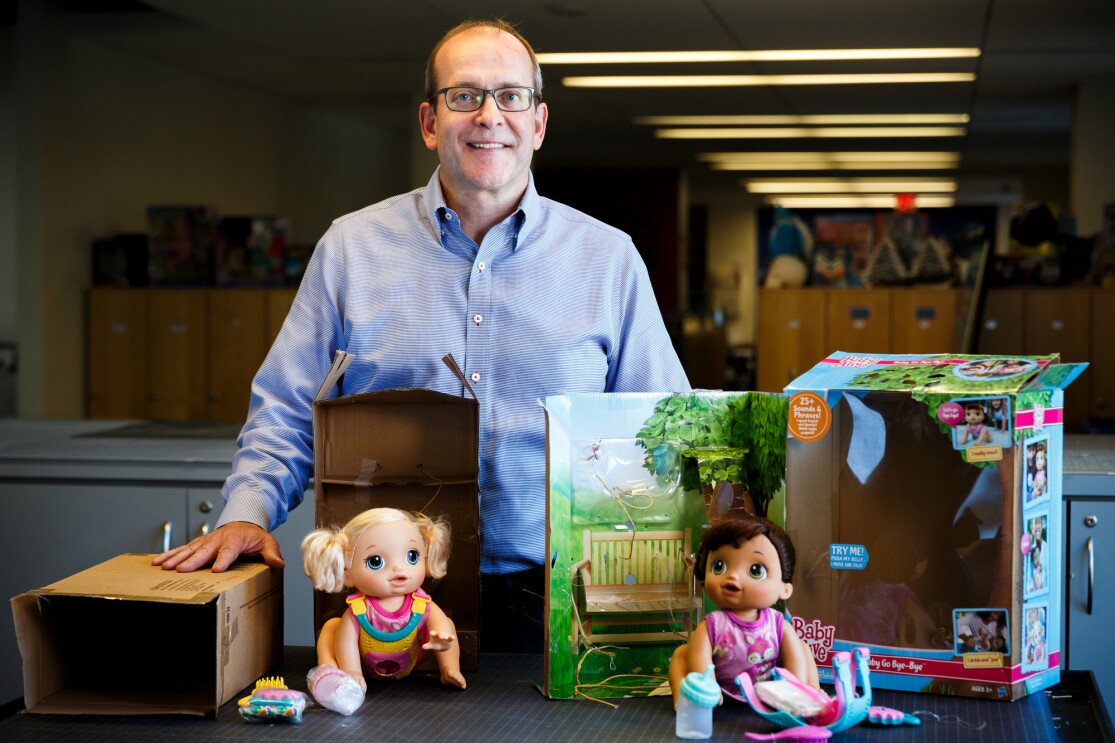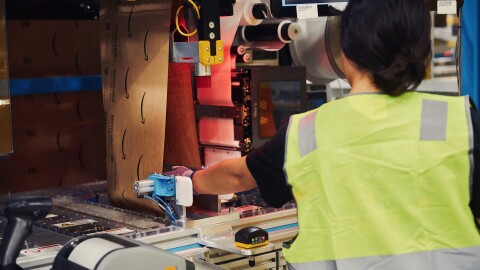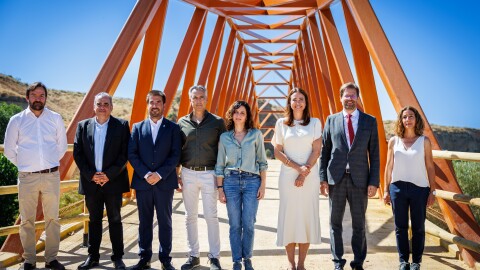The people who figured out how to turn a potato head into a blockbuster toy are taking on a new challenge. Hasbro, the iconic brand, is working with Amazon to reinvent the boxes that hold their games and toys to reduce waste and simplify packaging.
“Amazon is great from a collaboration perspective because they help us understand that the shopping journey is changing,” said Hasbro’s Jeff Jackson. “We’re thinking differently about how we're actually packaging products.”

Hasbro’s designers explain that the journey comes down to the difference between how toys need to be packaged to sit on a store shelf versus what’s needed to deliver that same toy safely and securely to an online customer. Hasbro’s engineers say that challenge, which might seem minor to shoppers, is huge in the world of packaging design.
One way Hasbro and Amazon are working together to improve the products that are shipped to customers is illustrated through a popular toy called Baby Alive, for which Hasbro has designed a new box for Amazon’s Frustration-Free Packaging program. The program is Amazon’s way of cutting down on waste, helping the environment, and reducing what some call “wrap rage” — which comes from the difficulty people occasionally have opening traditional packages with plastic clamshells and wire ties.
“With Baby Alive, we reduced the amount of material used by over 50 percent,” said Hasbro’s Jacquie Patterson. “And we reduced the overall size of that package by more than half by switching to Frustration-Free Packaging.”
We reduced the overall size of that package by more than half by switching to Frustration-Free Packaging.
Designers at Hasbro’s Providence, Rhode Island headquarters mock-up 3D models of their toys and design packaging that fits around them with as little extra space as possible. Instead of boxes with large plastic windows to show off a toy, the new packaging Hasbro has designed with Amazon is right-sized and 100 percent recyclable. The packages are also designed to take less than two minutes for a customer to open.
An Amazon engineer tasked with helping companies like Hasbro re-invent packaging says what the toy maker has accomplished isn’t easy — but it is a win on multiple fronts.
“It's difficult to change packaging,” said Amazon’s Brent Nelson. “It takes a collective effort to design packaging that ultimately is great for the planet and customers love. I think this is really a re-imagining of what the role of packaging is in a changing retail environment.”
Amazon introduced Frustration-Free Packaging 10 years ago, the first of a suite of sustainable packaging initiatives that have eliminated more than 244,000 tons of packaging materials, avoiding 500 million shipping boxes to date.
Hasbro’s Jackson says the change has been a big push for the toy company, which began roughly seven years ago when Amazon approached Hasbro about creating new boxes in order to cut down on waste. “Amazon is a company that, like Hasbro, cares deeply about sustainability and ensuring that we're reducing our footprint in the world and leaving the world in a better place for future generations.”
















